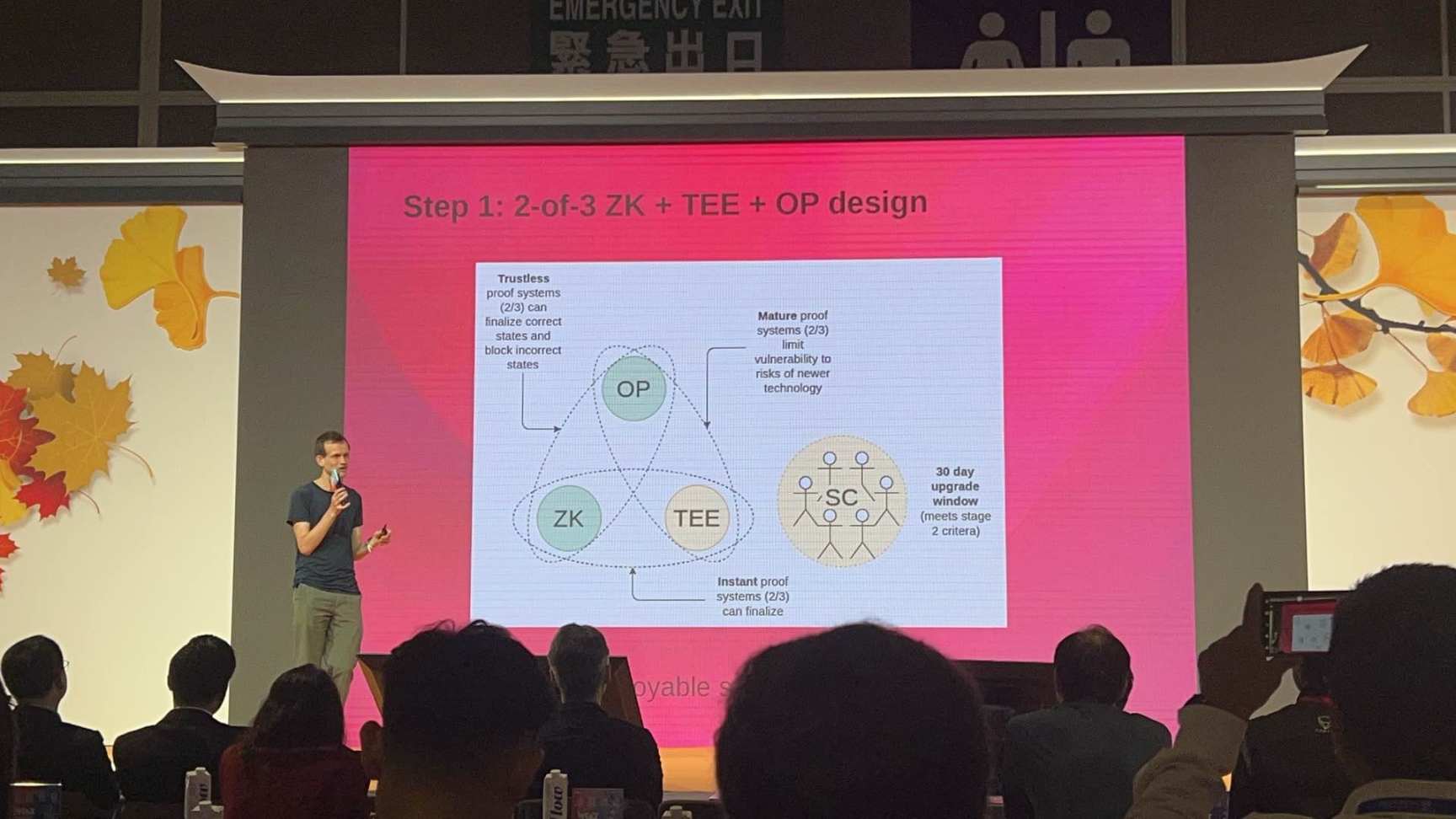"I Don't Look"
Written by: Leek, Foresight News
On the morning of April 8, Ethereum founder Vitalik returned to Hong Kong after a year and attended the Web3 Scholars Summit. As always, the audience was packed, and applause was continuous during V's speech.
At the same time, market data showed that Ethereum's latest price had reached $1580, down over 60% from its peak of $4000, and it fell below the $1500 mark on April 7, with a single-day drop of over 15%.
So, in the face of such market conditions for Ethereum, what is V's view as a community leader? The unfortunate fact is that V does not look at it. His focus remains on the technical development of Ethereum.

The key points of this speech: Vitalik reiterated Ethereum's long-term goals, including achieving 12-second native asynchronous communication between L2 and L1; users can still perform various operations through intent models (such as obtaining delays of less than 12 seconds or better costs), but liquidity costs will become extremely low; significantly enhancing the coupling between L2 and L1, promoting more applications to deploy components simultaneously on L2 and L1. Vitalik Buterin also stated that accelerating L2 confirmation times and constructing a more integrated and unified Ethereum system requires the following steps: ZK+TEE+ OP "choose two out of three" design, L1 asynchronous load, proof aggregation, and reducing proof delays.
Unlike previous cycles where Ethereum dominated, this time different institutions have starkly different views on Ethereum.
In a report released in March 2025, Standard Chartered sharply cut Ethereum's target price from $8500 to $2500, a decrease of up to 70%. The report pointed to three core risks: tightening global regulatory policies, obstacles in the development of the Layer2 ecosystem, and large-scale withdrawals by institutional investors, particularly warning that the U.S. SEC may classify ETH as a security. Data shows that the top 100 addresses hold 39% of ETH, indicating a much lower degree of decentralization compared to Bitcoin (14%), and facing substitution risks from public chains like Solana and Cardano. Morgan Stanley predicts that the ETH/BTC exchange rate will drop to 0.015 by 2027, marking a new low since 2017.
However, Grayscale still lists ETH as a core asset in its Q1 2025 crypto asset list, believing its technological foundation and ecosystem are irreplaceable. Galaxy Digital emphasizes that staking economics (annualized 4% yield) and Layer 2 integration (70% of on-chain activity has migrated to L2) will enhance ETH's long-term value, predicting that ETH prices may exceed $5500 by 2025. Additionally, new scenarios such as tokenized assets (e.g., 70% of U.S. Treasury bonds issued on Ethereum) and AI agents (e.g., Virtual Protocol on the Base chain) may become new engines for growth.
The "ZK+TEE+OP choose two out of three" technical roadmap proposed by V aims to achieve deep coupling between L2 and L1 through a combination of zero-knowledge proofs, trusted execution environments, and optimistic rollups. If key upgrades such as asynchronous load and proof aggregation can be completed by 2025, Ethereum is expected to regain performance advantages. Galaxy Digital predicts that the Pectra upgrade plan will be activated in April-May 2025, enhancing network efficiency by optimizing the proof-of-stake mechanism and expanding data availability. Furthermore, collaborations with traditional financial institutions (such as Standard Chartered issuing tokenized bonds on Ethereum) and the implementation of AI agent technology may inject new momentum into Ethereum.
The current market divergence on Ethereum essentially reflects a trust game regarding its technological iteration speed and ecosystem integration capabilities. Under V's "not looking at prices" technocratic approach, whether Ethereum can transform from a "congested chain" to a "modular network" by 2025 will determine its ability to maintain a leadership position in the Web3 era. Institutional investors need to closely monitor the progress of technological upgrades, changes in regulatory policies, and competitive dynamics from emerging public chains, seeking a balance in a market where risks and opportunities coexist.
免责声明:本文章仅代表作者个人观点,不代表本平台的立场和观点。本文章仅供信息分享,不构成对任何人的任何投资建议。用户与作者之间的任何争议,与本平台无关。如网页中刊载的文章或图片涉及侵权,请提供相关的权利证明和身份证明发送邮件到support@aicoin.com,本平台相关工作人员将会进行核查。




